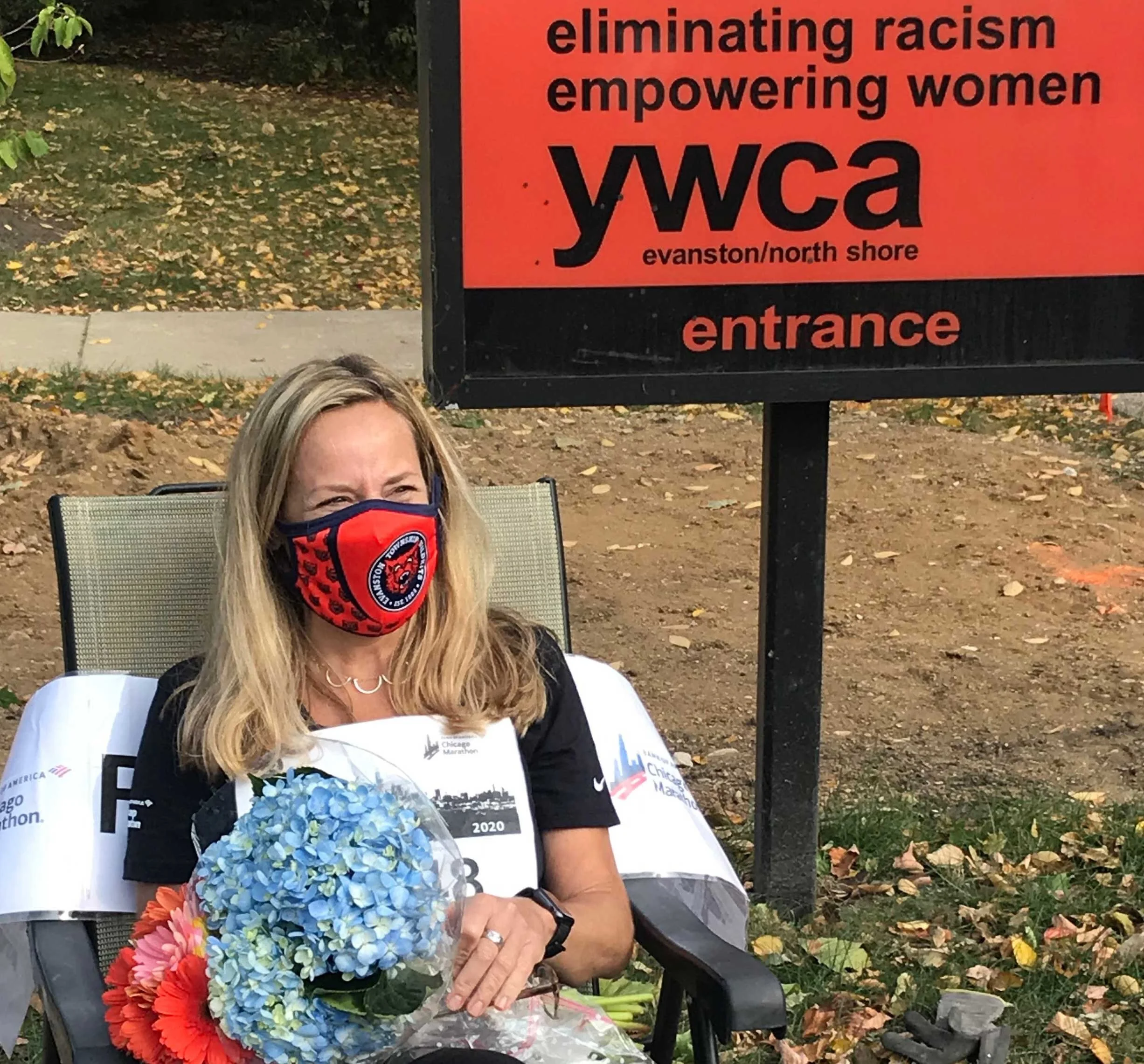A Call for Compassion: Advocating for Enhanced Patient Privacy in our Emergency Rooms
Reflecting on a disturbing encounter and urging Endeavor Health to prioritize privacy measures for vulnerable patients.
Trigger Warning: This newsletter contains references to suicide.
Sunday, January 28, 2024
“I’ve ordered a CT scan,” the attending doctor tells me as she pulls back the curtain and enters my room in the ER at Evanston Hospital, near Chicago.
“Oh, good,” I reply, shifting on the bed. “Thank you.”
“Maybe we can figure out what’s going on,” she adds before disappearing as quickly as she arrived.
Over the years, I’ve had this same exchange with many medical professionals, and today is no different. Once again, I have high hopes that we’ll better understand what’s going on below the surface, causing me a great deal of pain in my belly.
Twenty minutes later, a young orderly shows up and unhooks my IV.
“It’s a short ride from the ER to radiology,” she says, and I nod. I know this route well.
Moving through the narrow hallway of the ER, we take a right and head north toward a set of double doors — and that’s when I see the police officer (security officer?) standing outside a small, windowless room with its door wide open. A nurse stands in the doorway, gesturing as she speaks with someone in the room.
As we approach the room, I hear what sounds like a female voice coming from inside.
Then, just as we pass the room, I see the woman. She’s sitting up in a hospital bed, hair disheveled, wrapped in several white blankets, eyes wide open.
“We can’t let you leave,” the nurse explains loudly from the doorway. “You attempted to take your life today.”
For the next two seconds, as my gurney rolls past the woman’s door, everything happens in slow motion.
The woman’s face shifts slightly from the nurse to the open door, and for a fleeting moment, our eyes meet before she tilts her head up toward the ceiling.
Just ahead, two double doors click loudly, releasing their locks. I turn away from the woman as the doors swing open in opposite directions. The orderly glides us through the opening before the doors close behind us.
As we wait in the hallway for the CT room to open, I can’t stop thinking of the woman’s blank expression. I feel the weight of the nurse’s words settle into my already unsettled gut.
You attempted to take your life today.
Did the nurse realize that I, a bystander, could hear what she said?
Did the woman realize I heard private information about her?
If so, how did (or how would) that (eventually) make her feel?
Did I recognize this woman? What if I had?
Her blank expression is burned into my memory: haunted, bewildered, frustrated, and resigned.
Waiting for my turn in the CT lab, I’m a jumble of emotions.
I’m worried for the woman.
I’m wondering how she got to such a dark place.
I’m angry that she didn’t have more privacy.
I regret that, when I passed her room, I didn’t keep looking straight ahead.
When I enter the CT lab, the tech asks how I’m feeling. (“I’ve felt better.”)
The orderly assists me as I move from the gurney to the CT table, taking care to make sure my hospital gown is secured in the back.
Then, I’m asked why I’m here today. (“Abdominal pain.”)
I’m asked if I’ve ever had a CT scan before. (“Yes, several.”)
I’m asked to confirm my name and date of birth. (Christine Wolf, April 8, 1968).
I’m asked if I’m allergic to the contrast dye they’re about to inject. (“No.”)
I’m asked if I have any other questions or concerns. (“No thank you. I think I’m good.”)
I move to the CT table. The tech injects my IV line with a contrast solution, then instructs me to lay my hands above my head and hold still.
“This shouldn’t take long,” she says before leaving the room.
Lying prone in my hospital gown, I can’t stop thinking about the woman, or how vulnerable she must feel.
The CT machine begins its mechanical whir, and a recorded voice announces, “Take a deep breath in and hold still.” I do as I’m told. The CT table slides me into the machine and then backs itself out. The recorded voice then announces, “You can breathe.”
My body is tense. My exhale is shallow.
“You’re doing great,” a voice announces. “One more time, and then we’re done.”
I hold my breath again, but when I close my eyes, I see the face of the woman in the ER and wonder, How bad must things have gotten that she tried to end her life? Did she mean to do it? Does she have a family? Friends? What happens to her now?
“You can breathe,” I’m prompted. I can’t help but wonder if the woman needed prompting.
Had she needed reminding that she was a good person…or that overwhelm can feel like it’ll never end but it does…or that hard times eventually pass…
The CT tech appears next to the table. She helps me transfer back to the ER gurney. My orderly then appears, covers me with a blanket, and says in a chipper voice, “Good job! Let’s get you back…”
I’m struck by the upbeat positivity and tenderness all around me. I don’t know the woman in the ER, but it’s clear that she, like me, is struggling with pain beneath the surface. Why is invisible pain like mine treated with such kindness and attentiveness, while hers is treated with stern isolation and a lack of privacy?
As we re-enter the Emergency Department, we pass the woman again. This time, she’s outside her room, seated at a small table, hunched over and clutching a telephone. The security officer sits at her side as she speaks softly. We are less than five feet from her as we pass. I will not repeat what I hear her saying to the person on the other end. This is not a conversation that I, a stranger, am supposed to hear.
When I’m back in my room, a nurse covers me with a warm blanket — the second one I’ve been given since arriving in the ER. I’m told that I must stay until my test results come in. This declaration is delivered in the relative privacy of my room, softly and out of earshot of anyone passing in the hall.
After receiving my test results and instructions for follow-up care, I leave the Emergency Department with more than just my discharge papers. I also leave with a sense of responsibility to the woman around the corner, someone who could have been me or a member of my family or a friend — or even you.
A Serious Endeavor?
Evanston Hospital is owned by Endeavor Health, which is, according to the Chicago Tribune, the third-largest medical system in Illinois, with millions in funds earmarked for matters including health equity and community health.
And so, I’m looking directly at you, Endeavor.
Do you already have plans in place to create a more private, therapeutically appropriate environment for patients presenting with mental health challenges in your hospitals? If not, will you implement them as soon as possible?
Long before the Covid-19 pandemic, hospitals were recognizing the increasing number of mental health patients entering Emergency Departments, as well as the need for facilities to accommodate these patients comfortably, appropriately, and expeditiously. According to the World Health Organization (WHO), the prevalence of anxiety and depression has increased at least 25% worldwide since the pandemic. There is no question: The need for improved mental health infrastructure in hospitals — where so many go or end up while in crisis — has never been greater.
In his 2023 New Yorker article, Reinventing the E.R. for America’s Mental Health Crisis, Dhruv Khullar wrote, “We usually consider drugs, devices, and procedures the kinds of medical care that make a difference, but physical spaces can be therapeutic, too. It’s also easy to forget that, in a crisis, every minute matters.”
I remain hopeful that we’ll continue to expand our capacity to understand — and show compassion for — those who struggle with pain below the “surface”.
To be sure, hospitals — particularly Emergency Departments — regularly manage crises in which medical staff can’t afford to stop to pull a curtain or close a door or worry about what a bystander sees. And, to be sure, the woman I witnessed may not have even realized that her privacy and dignity were compromised.
But I did.
And that’s why I’m writing: to give patients like her a voice.
988 Suicide & Crisis Lifeline
No matter what problems you’re dealing with, whether or not you’re thinking about suicide, if you need someone to lean on for emotional support, call the 988 Lifeline.
If you’re struggling and need emotional support, talk to someone now.
988 is now the three-digit dialing code that routes callers to the 988 Suicide & Crisis Lifeline (or 988 Lifeline). On July 16, 2022, the 988 Lifeline transitioned away from the National Suicide Prevention Line reached through a 10-digit number to the three-digit 988 Lifeline. It is funded by the Substance Abuse and Mental Health Services Administration (SAMHSA) and administered by Vibrant Emotional Health (Vibrant).
When people call, text, or chat with the 988 Lifeline, they are connected to trained crisis counselors who are part of the existing 988 Lifeline network, made up of over 200 local crisis centers. These crisis counselors are trained to provide free and confidential emotional support and crisis counseling to people in suicidal crisis or emotional distress and connect them to resources. These services are available 24 hours a day, seven days a week, across the United States.
The previous 988 Lifeline phone number (1-800-273-8255) will always remain available to people in emotional distress or suicidal crisis.
The 988 Lifeline’s network of over 200 crisis centers has been in operation since 2005 and has been proven to be effective. Trained crisis counselors listen, provide support, and connect callers to resources when appropriate.
Callers who follow the “press 1” prompt are connected to the Veterans Crisis Line. A Spanish Language line is available by pressing 2, and more than 240 languages are supported through a Tele-Interpreters service. Callers now also have the option of following a “press 3” prompt to be connected to a crisis counselor specifically trained in supporting LGBTQI+ callers.
Numerous studies have shown that callers feel less suicidal, less depressed, less overwhelmed, and more hopeful after speaking with a 988 Lifeline crisis counselor.
Answer the call! 988 Lifeline centers are looking to bring on new volunteers and paid employees. You will receive training, so if you are looking to make a difference for those in crisis, apply today. Find your opportunity: 988lifeline.org/careers
For ways to support your local 988 Lifeline network crisis center, visit our Crisis Centers page here.
To learn about the impact of the 988 Lifeline, visit their new By the Numbers page.
To learn about what happens when you call, text, or chat with the 988 Lifeline, click here.
To learn more about the history of the 988 Lifeline, visit here.
To learn how Vibrant Emotional Health, the nonprofit administrator of the 988 Lifeline, has supported states’ implementation of the 988 Lifeline through grants, check here.
If you’re a veteran, service member, or loved one and want to know more about how 988 Lifeline works with the Veterans Crisis Line, click here.






